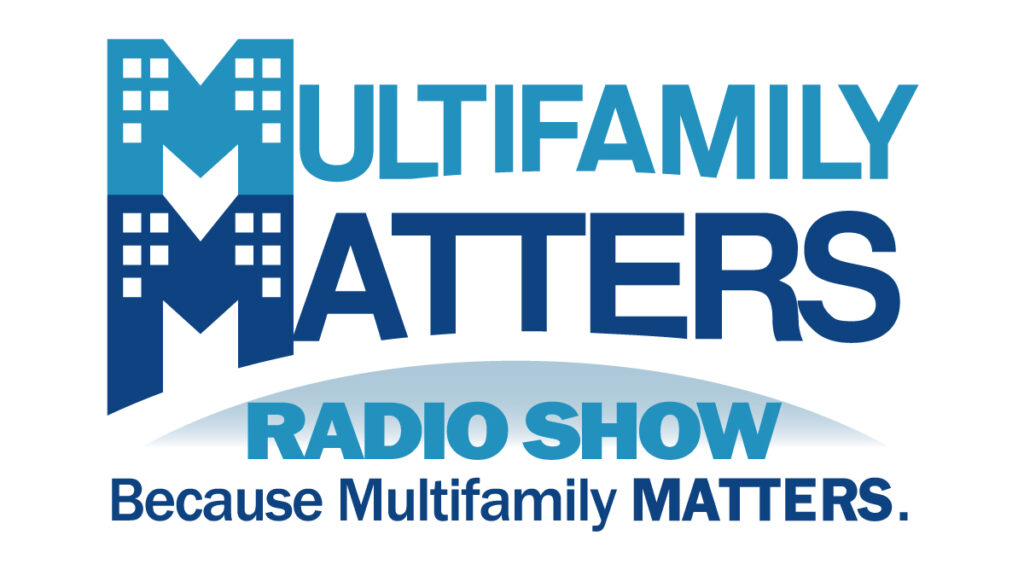The American knowledge worker is hit with a digital interruption every 43 seconds.
Every 43 seconds – that’s crazy! And that doesn’t even count a knock on the door, someone walking into your office, or the thoughts popping into your own head (what did I need to pick up at the grocery store again?). So how do we get anything done?
I spoke with Paul Marks on the Multifamily Matters Show to discuss tips for avoiding distraction in the workplace, how to build helpful habits, and how to plan with purpose to achieve your goals. Check out the episode here, or read on for a summary of our chat.

The 2 Biggest Time Wasters
I’ve found that the biggest time zappers in the workplace and beyond come in two forms: distractions and context switching.
Distractions can come in all shapes and sizes. Other than a digital distraction every 43 seconds for most Americans at work, we are often distracted by our own thoughts and ever-growing to-do list. We can create a distraction-free environment, and still, our thoughts can zap our time away.
Context switching, on the other hand, is something people do when they think they’re multitasking. When we think of multitasking, we imagine ourselves managing many different projects at once… but we’re actually context switching, or quickly switching from one task to the next. And every time we do that, we lose a huge percentage of our productivity.
Why? Because when we switch to something new, part of our brains are still dialed into the old task… so we’re not able to completely focus on the new task.
When we combine context switching with constant distractions, it’s a wonder we’re able to get anything done! Read on for some tips for avoiding distraction in the workplace.
Tips for Avoiding Distraction: “When I Sit Back Down” Bookmark
So often, when we’re in the middle of desk work and we get interrupted by “people work,” we get distracted and context-switch. And whenever we return to our desk, it takes us 30 minutes to remember what we were doing before. So what can we do to combat it?
Try creating a “When I Sit Back Down” bookmark. You’ll need a notebook or stack of sticky notes, and that’s it!
Next time you’re in the middle of desk work and you get interrupted by “people work” – in other words, someone knocking on your door, asking you a question, or need to put out a fire – grab a sticky note or notebook and write down: “When I sit back down, finish processing Jones application” or whatever your task is.
That way, when you return to your desk, you’ll avoid spending time remembering where you left off (and therefore avoid checking your email, scrolling social media, etc.).
How to Start a Habit
The best way to ensure you actually do this tip regularly is to make it a habit.
Habits have 3 parts: a trigger, a routine, and a reward.
Whenever you’re creating a new habit, it’s always helpful to decide what the trigger will be in advance. This is the spark that kicks off the habit.
The routine is the habit itself, and the reward is the way we feel afterwards.
If you’re trying to create a “When I Sit Back Down Bookmark” habit, you can keep a stack of sticky notes on your desk and write “When I Sit Back Down” at the top when the day starts, so you’re much more likely to use it throughout the day. That’s the trigger.
And the reward? Feeling good about picking up where you left off when you get back to your desk!
Planning Without Purpose is Pointless
And speaking of planning a trigger for your habit in advance… it’s wise to plan all your time in advance!
Most people spend their time putting out fires as they go through their day. They tackle the tasks that seem the most urgent at the moment. But that’s like throwing spaghetti at the wall and hoping something sticks; and truthfully, planning without purpose is pointless.
The easiest way to start planning your time? Schedule a 30 minute weekly planning session with yourself.
This is a time where you look ahead to the week and identify any potential obstacles, and what you’ll do to combat them. Do you have back-to-back meetings? Busy days with kids’ sports practices? Come up with solutions while you’re calm and able to think clearly, because there’s nothing worse than trying to come up with solutions when you’re exhausted on a Thursday night.
Want more? Listen to the full episode here.
Be the first to comment